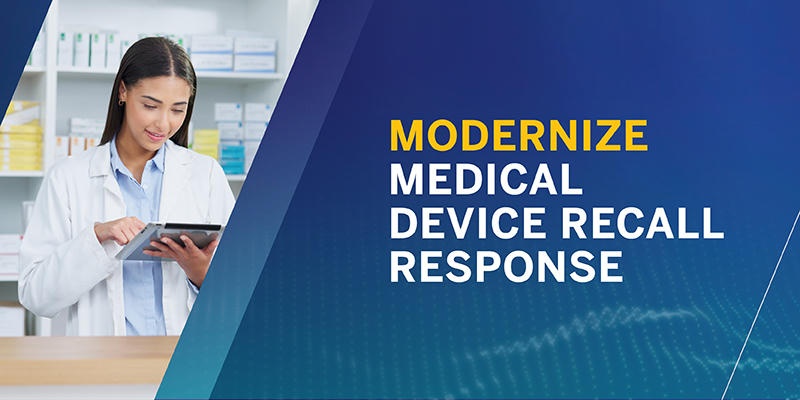
By: Paige Ivey, Sr. Director, Healthcare
The U.S. healthcare system is grappling with a growing and underappreciated threat: the sharp rise in medical device recalls. In the first half of 2024, over 570 medical device recalls were reported, an alarming 30% year-over-year increase, impacting more than 670 million units. While recalls are a necessary safety mechanism, the growing volume and complexity of these alerts expose critical vulnerabilities in how health systems manage recall response.
What’s increasingly clear is that while innovation in medical technology surges forward, recall infrastructure remains dangerously outdated. Many organizations still rely on siloed teams, manual processes, and legacy systems to track and respond to life-critical product recalls. This leaves patient safety at risk and places undue strain on clinicians and supply chain professionals already operating at capacity.
Healthcare organizations can no longer treat recalls as administrative tasks—they are urgent clinical events. And the industry needs infrastructure that reflects that reality.
Elevating Recall Management to a Strategic Priority
In today’s rapidly evolving healthcare landscape, leaders must rethink the role of product recall management. No longer a back-office function, recall response has emerged as a critical pillar of operational resilience, patient safety, and institutional accountability. What was once considered a regulatory checkbox is now a matter of clinical urgency.
Fortunately, innovation in this space is catching up to the complexity of the challenge. A new generation of intelligent recall platforms is beginning to transform how health systems manage product safety. These technologies leverage artificial intelligence and deep data integration to dramatically accelerate the detection and distribution of recall alerts—often delivering notifications weeks earlier than traditional sources.
By matching real-time alerts against an organization’s purchase history and active inventory, these solutions enable targeted communications that minimize confusion and maximize response speed. They automate the full recall lifecycle—from initial identification through removal and final disposition—within a single digital framework. The result is not just a faster response, but a smarter, more coordinated one.
This level of automation and oversight doesn’t just improve efficiency—it actively reduces risk. Nearly half of recent device recalls have been software-related, meaning failures are often invisible and can go undetected without integrated surveillance systems. In this environment—where complexity is rising and error margins are razor-thin—robust digital infrastructure has become the only viable path to managing risk at scale.
At the same time, regulatory scrutiny is intensifying, and clinical teams are being asked to do more with fewer resources. The argument for intelligent, integrated recall management is no longer theoretical—it’s operationally essential. Leading healthcare organizations are already embracing this shift, realizing improvements in recall response time, visibility across departments, and the strength of their compliance documentation. Feedback from users of next-generation recall platforms underscores this momentum, with the majority citing improved response times and stronger cross-functional collaboration.
These institutions are setting the standard by treating recalls not just as a safety requirement, but as an opportunity to build system-wide agility and trust.
A Call to Action
The trendline is clear: recalls are increasing, becoming more complex, and demanding a level of response that outpaces the capabilities of legacy systems. Healthcare leaders have an opportunity—and a responsibility—to build smarter recall ecosystems that put patient safety at the center.
Forward-thinking institutions won’t wait for another crisis to act. They’ll lead the charge in turning recall readiness into a strategic advantage.
